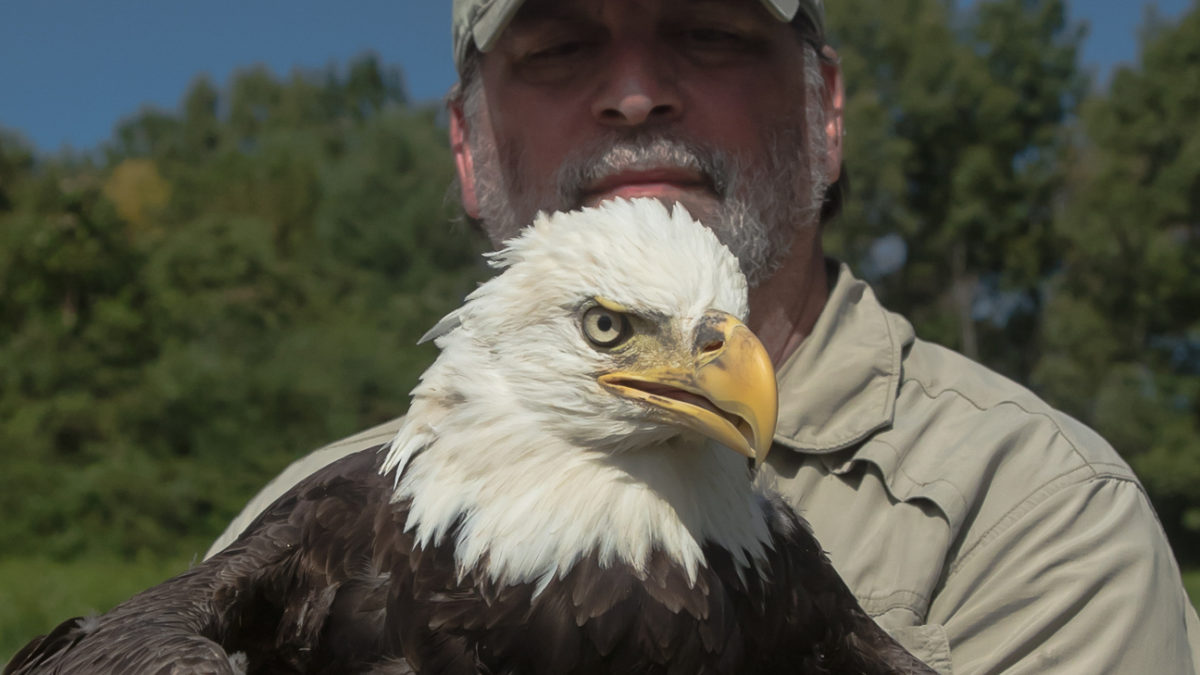Trapping eagles

Flying into the “Bay of the Dead”
October 1, 2021
2021 Peregrine Season
October 4, 2021By Bryan Watts
10/1/2021
Like fly fishing, catching free-flying eagles is a mental game of solving puzzles and mastering technique. You have to learn the seasonality of food use within the landscape you are working, to be able to predict where eagles will hunt within that landscape during different wind and weather conditions, master the techniques that match the seasons and understand which places within their hunting grounds are best suited to the gear you have to work with. Eagles are extremely wary. You have to choose places where they feel comfortable coming down to feed. An experienced fly fisherman assesses the landscape, the season and daily conditions and with good technique places the right fly in the right pocket. An experienced eagle trapper does the same. Over the years, CCB has trapped eagles within a wide range of settings mostly to deploy transmitters to answer critical conservation questions involving eagle movements. We have used floating fish traps, remote triggered bow nets, padded leg-hold traps and baited rocket nets.
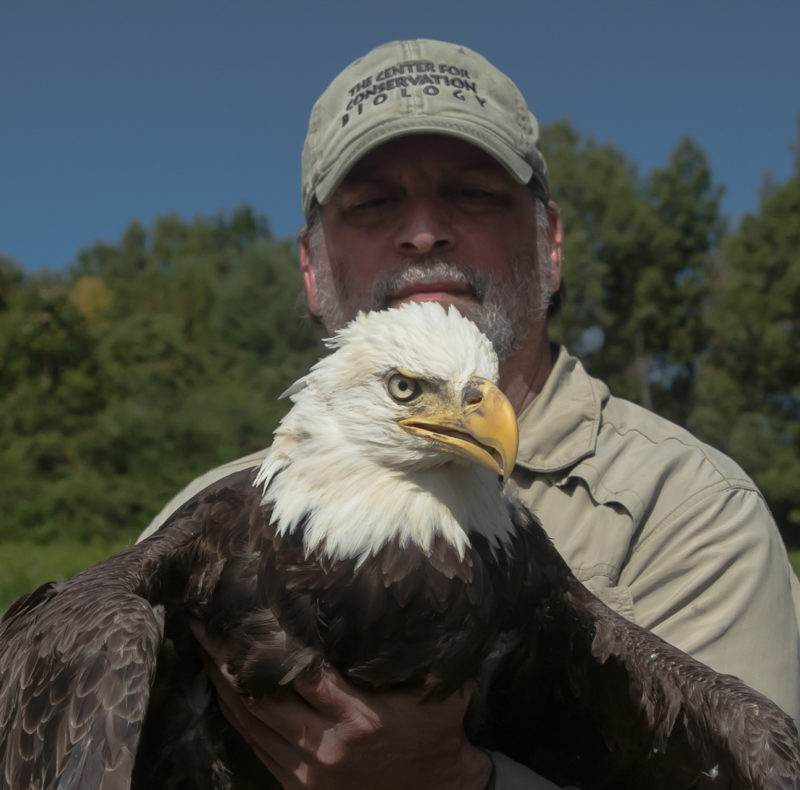
The floating fish trap is likely the most versatile technique across seasons in water settings. The trap includes a floating fish and nooses that are rigged through the fish to a drag line connected to a weight with a bungee cord. As the eagle picks the fish up from the water surface it closes the nooses around the foot or toe and the bungee cord eases the bird down onto the water where it is retrieved by boat. Keys to success are being able to rig the nooses correctly and selecting flat water that does not pull the nooses prematurely. Eagles are very effective at finding fish on the water surface but you have to select the right location on the right day.
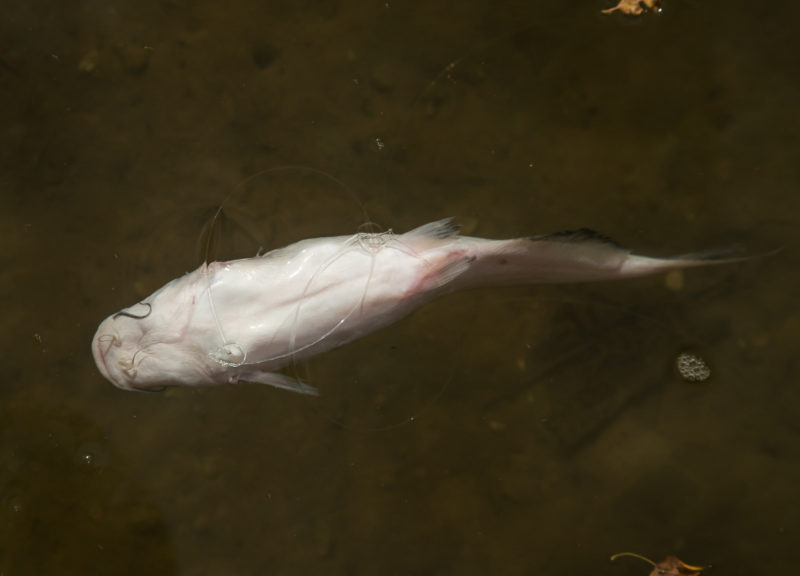
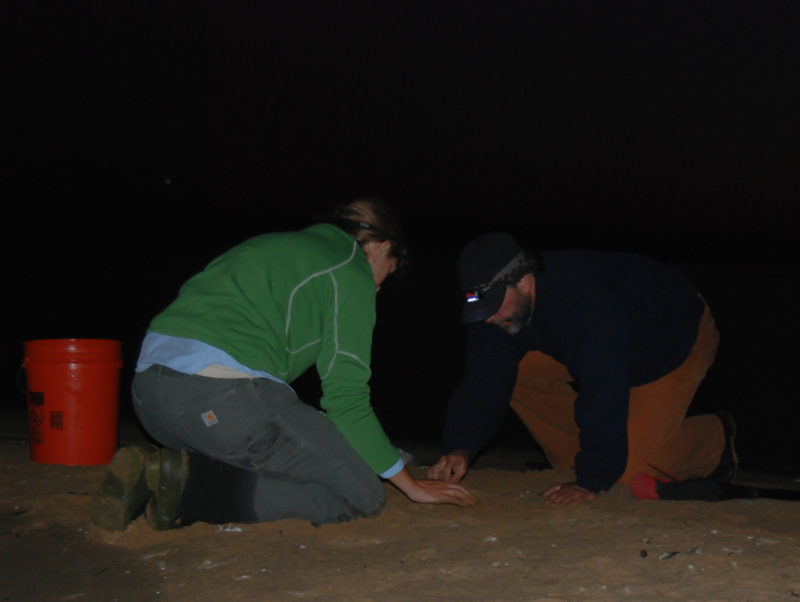
Padded leg-hold traps are most often used on exposed beaches and sand bars but may also be used in open inland settings. Sets typically include 2-3 traps anchored to a weight buried underground with a fish or other carrion tied in the center. Birds come down to the bait and step on the trigger pan and are held in place until retrieval. We have effectively used #2 double-spring leg-holds with one of the springs removed. These traps do not snap hard and can be closed on your finger without any concern. Their main function is to hold birds for brief periods. This trapping technique may be used during any season along waterways. If used inland, they are most effective during the winter months.
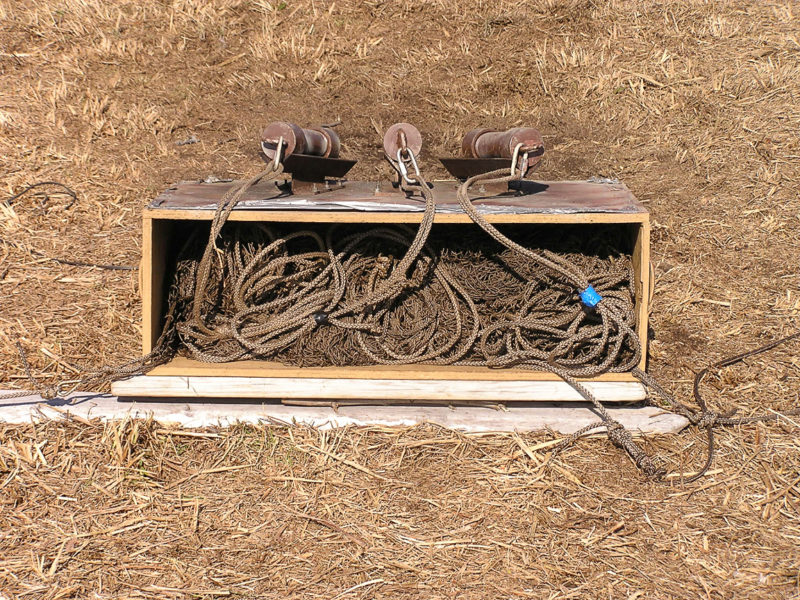
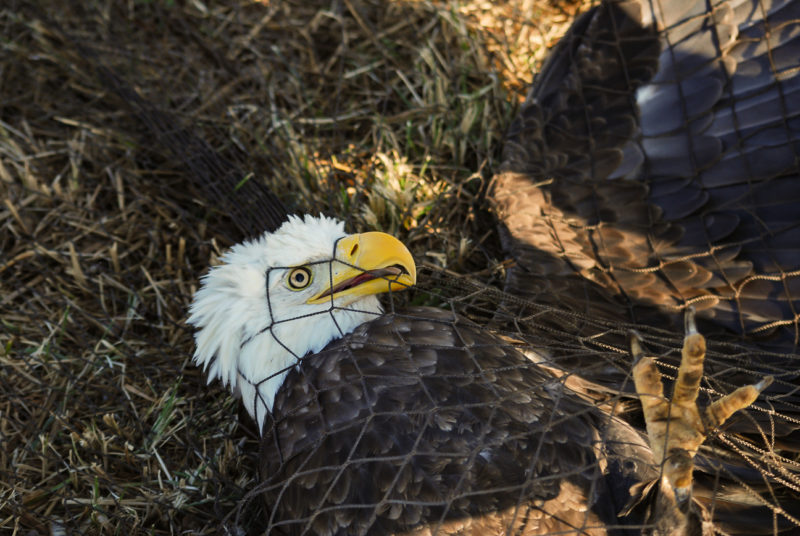
Rocket nets and bow nets are remotely triggered sets designed to attract birds down to the ground and once triggered hold them until retrieval. These traps are most effective during the winter season when fish move to deeper water and eagles hunt more frequently on carrion. Eagles typically prefer wide open areas for ground feeding where they can scan for approaching predators. Net sets are typically baited for days to allow birds time to become comfortable with the site. Nets are set for capture once birds have become regular visitors. Rocket nets use explosive charges to shoot a net over a large area while bow nets use a spring-loaded frame to cover a smaller bait station. Both may be very effective depending on the setting. Keys to success are selecting appropriate sites and attention to detail in setting up and operation of the gear.
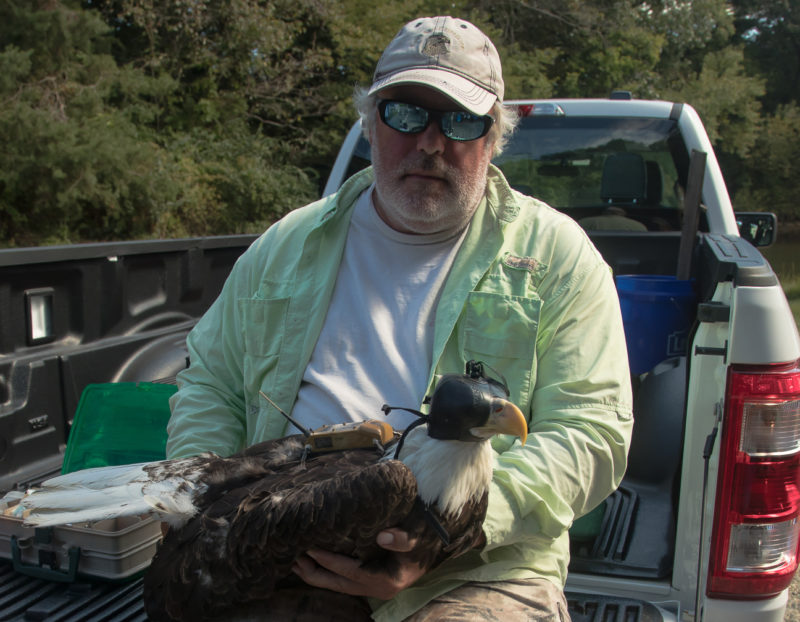
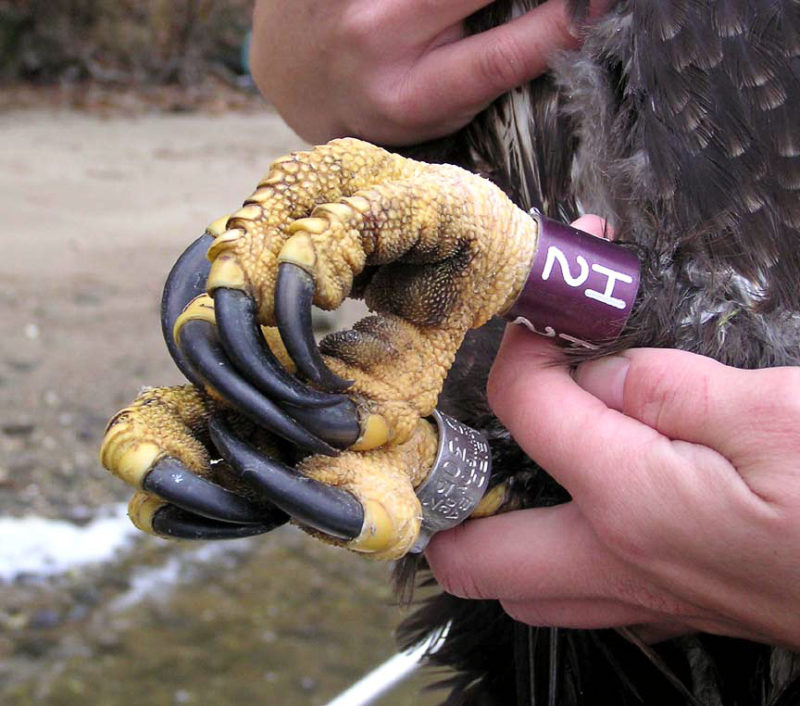
The top priority in the use of any trapping gear and how it is deployed is the safety of the birds and the researchers. Trappers should never put birds in an uncontrolled situation and should never operate a site without “eyes on” the gear and rapid access to any captured bird. Eagles are powerful, high-strung, unforgiving predators and should always be handled with care.

